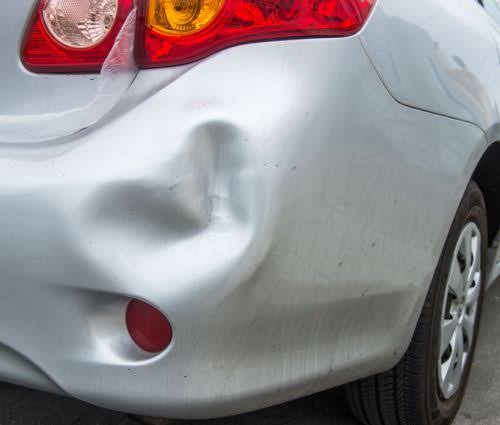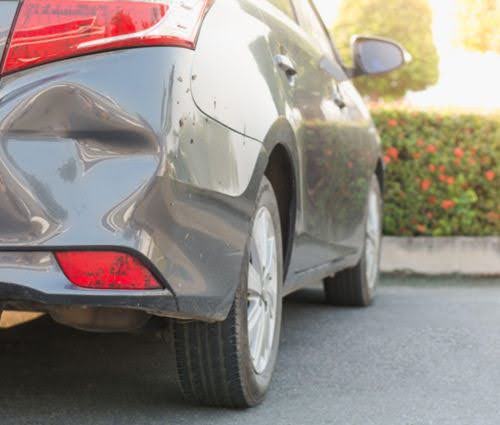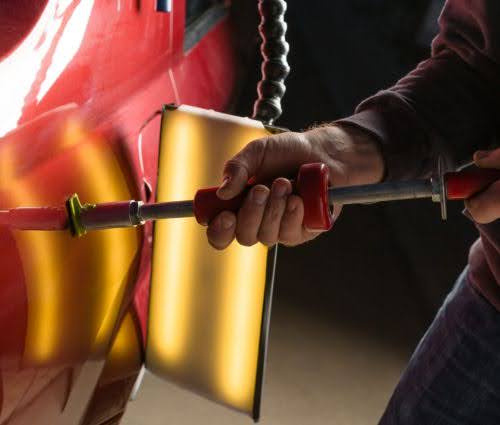Myths and Misconceptions About Paintless Dent Repair
Beliefs and Its Effectiveness
Uncovering the Truth Behind Common PDR Misconceptions

Paintless Dent Repair (PDR) is a widely used technique for fixing dents, yet many false claims create confusion. Some believe PDR only works on small dents, while others assume it damages paint or is too expensive. These misconceptions often discourage car owners from choosing an efficient repair method.
PDR is a practical option for dent removal, particularly for hail damage. It preserves a vehicle’s factory paint, maintains its value, and is often covered by insurance. Clearing up these misunderstandings helps drivers make better choices for dent repair.

Small Dents Are not the Only Ones That Get Fixed
Many people believe that PDR is only effective for small, shallow dents, but this is not true. While deep creases and sharp dents may seem beyond repair, skilled technicians use specialized tools to manipulate the metal back into shape. As long as the paint remains intact, PDR can restore the vehicle’s surface without requiring traditional body shop techniques like sanding, filling, or repainting.
Hailstorms often leave vehicles covered in dents of varying sizes, from tiny dings to larger indentations. PDR is designed to address this type of widespread damage efficiently. Technicians carefully work on each dent, using controlled pressure to reshape the metal without harming the original factory paint. This method verify a smooth, effortless finish that maintains the vehicle’s value.
Because PDR avoids extensive labor and materials like fillers and paint, it is the preferred repair option for insurance companies and professional repair shops. Not only does it provide high-quality results, but it also offers a quicker, more cost-effective solution for vehicle owners dealing with significant hail damage.
PDR Does Not Harm Your Vehicle’s Original Paint

Some vehicle owners worry that applying pressure to a dent during PDR might weaken or crack the paint. This concern likely comes from a misunderstanding of how the process works. Unlike traditional bodywork, which involves sanding, filling, and repainting, PDR is a non-invasive technique. It carefully restores the metal without altering the factory finish.
Modern automotive paints are designed to be highly flexible and durable. Vehicles today undergo advanced painting processes that include a protective clear coat, which enhances paint adhesion and prevents cracking. Because PDR technicians use specialized tools to gently massage the dented area from behind, the paint remains undisturbed. The process does not require heat, chemicals, or abrasives, verifying the original finish stays intact.

Even with precise paint-matching techniques, it is difficult to replicate the exact look and feel of the factory finish. Over time, repainted areas may fade differently than the rest of the vehicle, making repairs more noticeable. By keeping the original paint intact, PDR preserves the vehicle’s appearance and value. This is especially important for leased or high-value vehicles, where maintaining factory specifications is a priority. Since no additional paint or fillers are applied, the repair is virtually undetectable, leaving no signs of previous damage.
For vehicle owners concerned about long-term durability, PDR remains one of the safest and most reliable methods for dent removal. It eliminates dents without compromising the structural integrity of the panel or the paint’s protective properties. Choosing PDR over traditional methods confirms that the vehicle remains in top condition without unnecessary alterations to its original design.
Paintless Dent Repair Is More Affordable Than Expected
Many assume that Paintless Dent Repair is expensive due to the specialized tools and skills required, but in reality, it is often more budget-friendly than traditional body repairs. Unlike conventional methods that involve sanding, filling, and repainting, PDR eliminates the need for costly materials and extensive labor. This streamlined process keeps repair expenses lower while delivering high-quality results.
Another reason PDR remains an affordable option is its efficiency. Traditional dent repair can take days, requiring multiple steps, including drying and curing paint. In contrast, PDR can often be completed in just a few hours, significantly reducing labor costs. A shorter repair time means vehicle owners experience less downtime, avoiding the inconvenience of being without their car for an extended period.
Many insurance companies also recognize PDR as a cost-effective solution for hail damage and minor dents. Because it maintains the factory paint and prevents further damage, insurers are more likely to cover PDR repairs under comprehensive policies. For those looking for a reliable, affordable way to fix dents, PDR remains a top choice.
Car Insurance Often Covers Paintless Dent Repair for Hail Damage
Comprehensive auto insurance typically covers PDR, especially for hail damage and other minor dents. Since PDR is a cost-effective, non-invasive solution that restores a vehicle’s condition without the need for repainting, many insurance providers prefer it over traditional bodywork. By maintaining the original factory finish and structural integrity, PDR also helps preserve the car’s resale value, appearance, and overall quality—making it a smart, long-term option for both insurers and vehicle owners alike.

To determine if PDR is covered, drivers should review their insurance policies or contact their providers directly. Most policies that include hail damage protection will also approve PDR as a repair method. Many reputable repair shops work closely with insurance companies and assist customers throughout the claims process. By choosing a shop experienced in handling insurance claims, vehicle owners can certify a smoother, stress-free repair experience while maximizing their policy benefits.
Paintless Dent Repair Is Faster Than Traditional Dent Removal Methods
Some believe that Paintless Dent Repair (PDR) is a time-consuming process, comparable to traditional body shop repairs. This misconception leads some vehicle owners to assume that each dent must be repaired individually, resulting in long wait times. The reality is that PDR is one of the fastest methods for restoring hail-damaged vehicles, making it a convenient option for drivers.
Unlike conventional dent repair, which requires sanding, filling, priming, and repainting, PDR is a one-step process. Technicians use specialized tools to access dents from behind the panel and gently restore the metal to its original shape. Since there is no need for repainting, drying, or multiple refinishing layers, repairs can be completed much faster. This method preserves the vehicle’s factory paint, maintaining its original value and appearance. Plus, PDR is often more cost-effective than traditional repairs, making it a preferred choice for hail damage restoration.
Minor dents can often be fixed within a few hours, while vehicles with extensive hail damage may only require a day in the shop. Many professional PDR providers offer same-day service, allowing customers to get back on the road without lengthy delays. For those who rely on their vehicles daily, PDR provides a much quicker alternative to panel replacements or conventional dent repair methods. By choosing PDR, vehicle owners can enjoy high-quality repairs without the inconvenience of extended wait times.
Paintless Dent Repair Is an Eco-Friendly Dent Removal Method

This mechanical approach makes PDR a sustainable and waste-free alternative. Traditional repairs often generate excess materials, including unused paint and hazardous waste. By choosing PDR, vehicle owners not only restore their car’s appearance but also reduce their environmental footprint.

Clearing Up Common Misconceptions About Paintless Dent Repair (PDR)
Paintless Dent Repair (PDR) is a highly effective technique for removing dents without the need for paint or fillers. Many people assume PDR is only for small dents, but it can repair larger dents caused by hail or minor collisions. Since PDR retains the factory paint, it helps maintain the vehicle’s original finish and resale value.
Unlike traditional bodywork, which requires sanding, painting, and extensive labor, PDR is a quicker and more affordable option. Insurance companies often cover PDR for hail damage, making it a cost-effective solution for car owners. Because it doesn’t involve chemicals or repainting, PDR is an environmentally friendly repair method. Contact us today to learn how our professional PDR services can help your business. For those dealing with dents or hail damage, PDR provides a practical alternative that restores a vehicle’s appearance without compromising its structural integrity.

VIP Hail Service | Plano, TX
Professional Hail Repair
Stay Up-to-date With Our Content
Subscribe to learn more about our mission!


